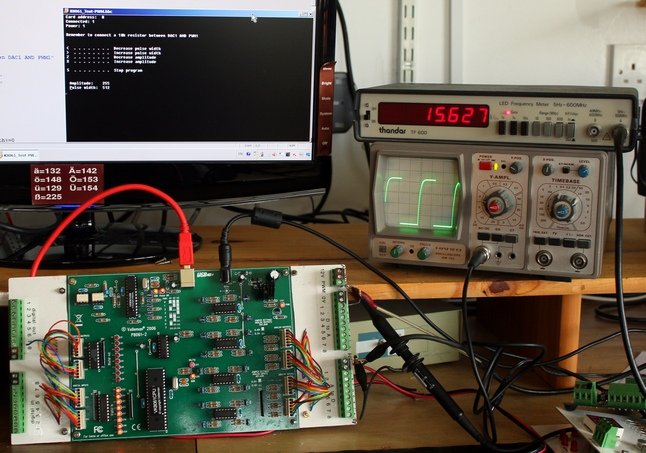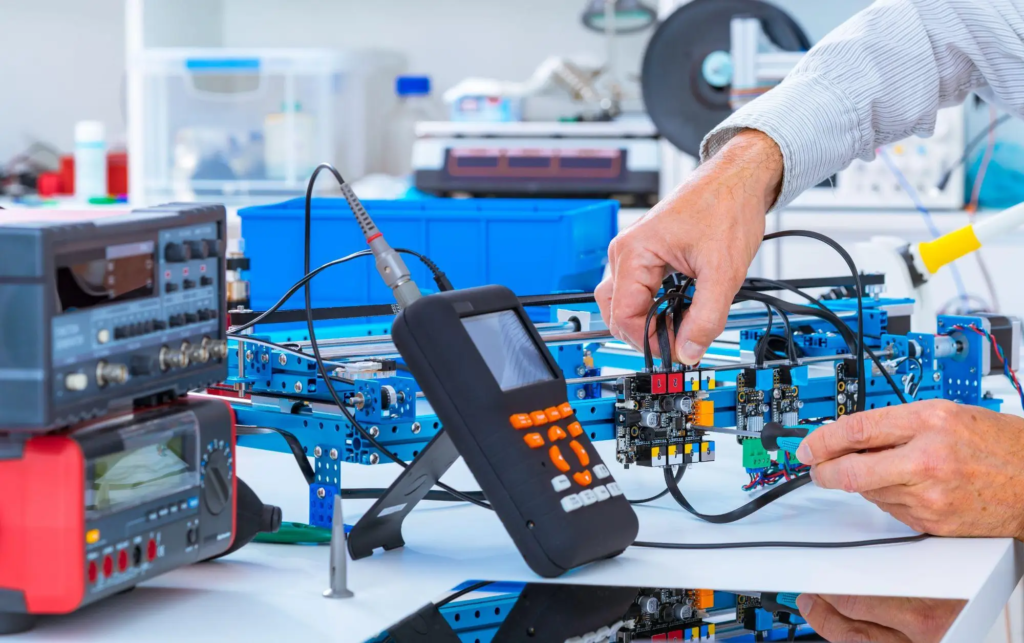Electronics Firmware Development
KFTRONICS specializes in designing innovative firmware solutions that improve device performance, functionality, and integration with a wide range of applications. Our team of knowledgeable engineers uses state-of-the-art technology to provide reliable firmware solutions that are suited to the needs of the industry.
IoT device integrated firmware, which controls memory, timers, controllers, and input/output interfaces, must be programmed and maintained. This process is known as firmware development. Developing and changing software for devices is the work of embedded firmware development. This entails writing code in assembly or C, in addition to testing and debugging to make sure everything works as it should.

Creating embedded firmware requires a number of important tasks, including:

Requirements analysis and collection
Recognize the goals and limitations of the project collaborate with hardware engineers, and evaluate risks.

Design
Establish the architecture and components, and produce a high-level design.

Implementation
Create low-level code, run tests, and troubleshoot the firmware.

Testing
Carry out comprehensive testing, which should include acceptability, integration, and unit testing.

Deployment
Make the required configuration and transfer the firmware onto the desired device.

Maintenance and updates
By addressing issues, incorporating new features, or carrying out other essential upgrades, maintain and update the firmware.
KFTRONICS Best Practices for Embedded Firmware Design
KFTRONICS specializes in providing Reliable Firmware and Process solutions for B2B organizations that prioritize robust products and long-term sales. Our aim is to deliver stable firmware through a dependable process. Firmware code can often have unexpected interactions with hardware, requiring engineers to invest significant effort in fine-tuning and debugging. Clear and understandable code facilitates quick defect identification, ensuring product functionality and accelerating time to market.
We employ five key strategies to ensure firmware reliability…
Documentation:
To guarantee smooth operation and avoid future snags, KFTRONICS uses three different kinds of documentation: technical data, decision-making procedures, and continuing conversations.
Every project is documented on internal wikis hosted on Evernote. Well-organized readme files for every repository that provide guidelines for code review, compilation, and testing are important components of our documentation. In addition, we efficiently oversee repositories to monitor project progress and decision-making procedures and offer a user guide for reusable code.


Quality Assurance: Testing flow
KFTRONICS makes sure that firmware is tested efficiently in order to meet the end application goal. For embedded systems to operate correctly, firmware testing is essential for finding faults and averting system failures, data loss, and security breaches. Sustaining the company’s reputation and guaranteeing user contentment are contingent upon this. Verifying that firmware satisfies design specifications, operates as intended under a variety of circumstances, and interfaces with hardware components correctly are all part of the testing process. Testing, including system, integration, and unit testing, should take place at various phases of development.
QA begins with a certain end objective in mind. To assure code compliance, we carefully specify requirements and test processes, which minimizes the need for lengthy testing. We simplify the process of validating and industrializing our ideas by making testability a top priority during the development and production phases.
Team Building
To tackle challenging bugs at the Hardware-Firmware interface, multidisciplinary training is essential for problem-solving. Engineers focused on Firmware also receive training in PCB design, troubleshooting, RF, EMC, manufacturing, and mechanical design to understand the complexities of related disciplines.
Coding standards
Every quarter, in-house auditors check our source code for compliance with firmware coding guidelines. For refactoring, projects are ranked and given a score. Our designs facilitate easy-to-use OTA firmware updates.
Focus on C programming
NXP, STM32, and PIC32 are our top picks due to their functionality, cost, and high quality. Since C is the most efficient, dependable, thoroughly studied, and MCU-optimized language, we utilize it exclusively. But, while prototyping; we also use Python, C++, and JavaScript. We can produce excellent results because of our concentrated strategy, regardless of whether it means turning down some intriguing ideas.

WHY ROBUST FIRMWARE
Writing code that is accessible and follows standard practices helps our engineers work efficiently and allows others to easily explore and understand our code. This improves communication and problem-solving, speeding up Time to Market.
Our standards ensure reliable code and a stable coding environment. If one engineer is unavailable, another can seamlessly take over to prevent delays.
Benefits of Robust FIRMWARE
Improved Product Quality: Firmware testing helps to identify and eliminate bugs and errors in the firmware, which can improve the overall quality of the product. This can lead to better customer satisfaction, increased sales, and improved brand reputation.
Increased Reliability:
Firmware testing can help to identify potential issues that could cause the device to fail or malfunction. By identifying these issues early on, you can take steps to address them and improve the reliability of the device.
Faster Time-to-Market:
Firmware testing can help to reduce the time it takes to bring a product to market. By identifying and addressing issues early on, you can ensure that your product is ready for launch in a timely manner.
Cost Savings:
Firmware testing can help to reduce the costs associated with fixing bugs and errors in the firmware. By identifying and addressing these issues early on, you can avoid costly recalls and repairs.
Future of Firmware Testing:
The future of firmware testing is crucial as technology advances and electronic devices become more prevalent across various industries. With the increasing complexity of these systems, reliable and effective software verification will be essential to ensure that devices function as intended.
